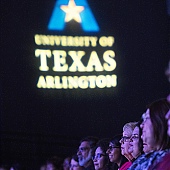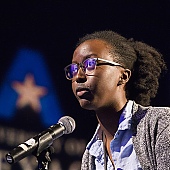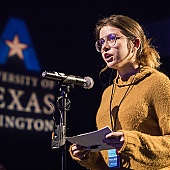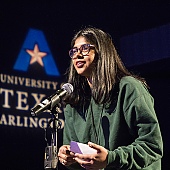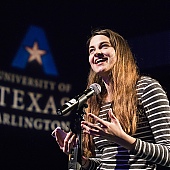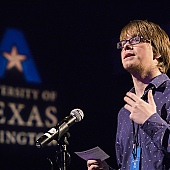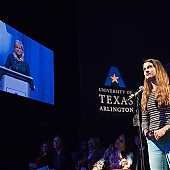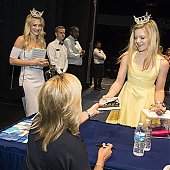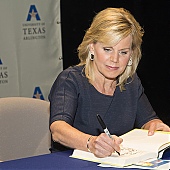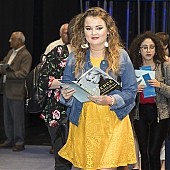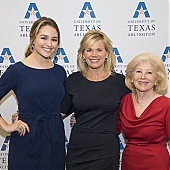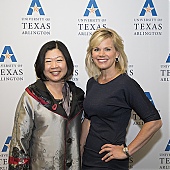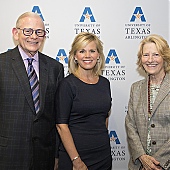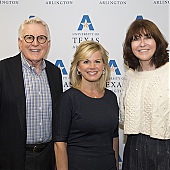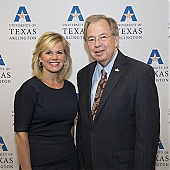Photograph by Adam Voorhes

Small-Scale Security, Full-Force Defense
A new center aims to strengthen national security by devising nanoscale probes to test food and water, creating sensor technology to track border threats, and developing nanomedicine to treat radiation exposure.
· Spring 2013 · Comment ·
In Wei Chen’s futuristic universe, incredibly sensitive nanotech sensors fly about in drones, are implanted in high-traffic bridges, and journey aboard robots into environments no humans could survive. They’re placed invisibly and inexpensively into buildings, stadiums, roadways, airports, rail lines, maritime shipping docks, and population centers.
The tiny things never sleep, never go off duty. They detect radiation even when it’s heavily shielded, sniff out dangerous chemicals in the air and water, and identify biological hazards like anthrax spores. When they sense a threat, advanced technologies like radio frequency identification transmit alerts.
That’s the future Dr. Chen sees—and it’s not that far away. A physics associate professor and leading authority on using nanotechnology for radiation sensing, he is the director of UT Arlington’s new Center for Security Advances Via Applied Nanotechnology (SAVANT). Established in January, the center focuses on strengthening U.S. security through cross-disciplinary research.
DETECTING THREATS
Physics Associate Professor Wei Chen directs a new research endeavor focused on protecting U.S. borders.
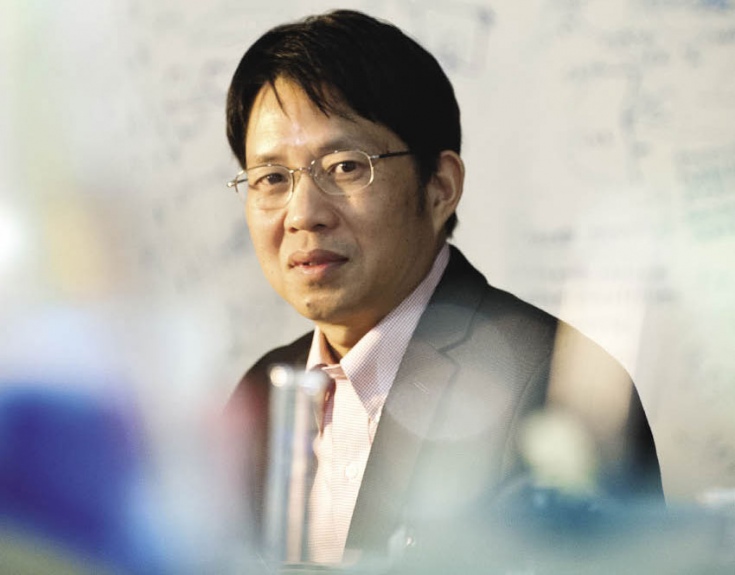
Plans include marrying RFID and sensing technologies to track border threats, creating nanoscale probes to test food and water, and developing nanomedicine to treat radiation exposure. The center will explore using luminescent nanoparticles to prevent friendly fire incidents.
“Our center will go beyond standard detection techniques using newly advanced, science-based breakthroughs,” Chen says. “We will be looking to identify threats in a variety of arenas, including transportation hubs and other public gathering places, public infrastructure networks, and the U.S. border.”
PROFITABLE PARTNERSHIPS
UT Arlington is already a pacesetter in sensing and visioning technologies, particularly in health care. Provost Ronald Elsenbaumer believes SAVANT will ratchet up that research.
“Federal funding agencies have clearly indicated the need for increased innovation to address U.S. security issues at home and abroad,” he says. “Research universities, especially those like UT Arlington, have a significant role to play.”
SAVANT stemmed from Homeland Security Department grants Chen received to fund pilot studies. The goal: Create inexpensive, commercially produced sensors using nanotechnology refinements.
TINY TRACKERS
Researchers in the SAVANT center are developing luminescent nanoparticles and wireless sensors to keep Americans safe from biological hazards and terrorist attacks.
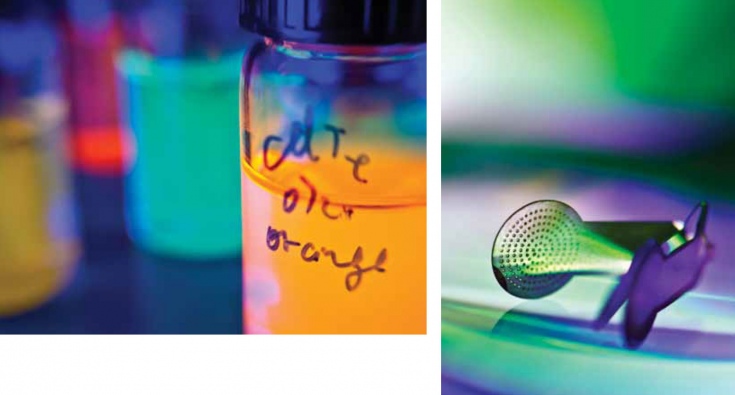
“If, for example, you want to use traditional radiation detectors, the devices are very expensive,” Chen explains. “Plus, many old-style detection devices are not very sensitive, as opposed to nanoparticle devices, which are not only much more sensitive but potentially much less costly to commercially produce.”
Even before SAVANT came along, federal entities showed interest in UT Arlington’s efforts. Chen and physics Professor Andrew Brandt have received more than $1.9 million in federal grants to develop radiation detection devices using luminescent nanoparticles embedded in a polymer thin film.
“Advances in sensor technology in medicine can increase efficiency, save lives, and cut costs—all good things.”
Dr. Brandt and Erick Jones, an industrial and manufacturing systems engineering associate professor, are deputy directors of the center. Collaboration primarily will be between the College of Science and the College of Engineering, but the College of Education and Health Professions, the College of Liberal Arts, and the College of Business also will play a role.
Chen foresees SAVANT members consulting with architects to determine how best to incorporate sensor technology into buildings and landscapes. As the research becomes commercially feasible, marketing and communications assistance will be sought.
“The days when researchers across campus were limited to their own silos of specialty are finished,” College of Engineering Dean Jean-Pierre Bardet says. “If we’re going to solve complex problems, collaborations like this are essential.”
RADIATING HOPE
Chen says developing nanomedicine for radiation diseases is something no other homeland security center incorporates. SAVANT will concentrate on threat detection and prevention, and it will aid U.S. citizens should radiation events occur.
“We may use nanocarriers to deliver oxygen and nutrients to help DNA and protein repair once they are damaged by radiation. This might help patients recover more quickly.”
Other nanomedicine team members include bioengineering professors Liping Tang and Kytai Nguyen and psychology Associate Professor Qing Lin.
“Radiation disease is in some ways similar to cancer,” Dr. Tang says. “We may use similar approaches from cancer treatment to explore nanomedicine for radiation diseases.”
It does little good for a sensor to detect radiation if it can’t communicate the problem to people. J.-C. Chiao, who holds the Janet and Mike Greene and the Jenkins Garrett professorships in electrical engineering, says the devices must communicate using wireless technology. His research embeds sensing elements inside a wireless transponder.
“Making devices wireless may sound straightforward,” he says, “but there are a lot of challenges.”
For example, the signals generated by nanoscale devices are usually weak and must be amplified. But it’s not feasible to recharge or replace batteries for thousands—millions—of sensors embedded in buildings, on bridges, across borders, or inside concrete levees. But what if the sensors had self-operation capability to harvest energy? One option is to use electromagnetic energy as the power source.
“Such nanodevices can be small, durable, and installed anywhere because they don’t need batteries,” says Dr. Chiao, who works with electrical engineering researcher Rasool Kenarangui on wireless miniature radiation and structural health detectors. “Build them cheaply enough and they can be widely distributed and placed directly into our infrastructures. With power sources from electromagnetic waves, they can provide real-time environmental—either physical, chemical, or biological—data to the networking cloud for immediate responses. You can imagine how useful this would be to Homeland Security, the police, or even the CDC.”
SENSE OF SECURITY
Sometimes these sensors must be adaptable to dangerous and confusing environments. Such was the case with the Fukushima Daiichi nuclear disaster following the monstrous tsunami that struck Japan in 2011.
“At Fukushima they had some very expensive and sophisticated robots that they tried to send in to determine the extent of the problem, but the robots couldn’t access some areas and many of them broke down,” electrical engineering Associate Professor Dan Popa says. “We’re working on robots that can withstand harsh environments and communicate the information that sensors pick up with each other. The bonus is that in addition to the sensory abilities, we can design robots that do tasks similar to what humans can do, such as turning valves in very hostile environments with radiation.”
Dr. Popa sees robotics moving rapidly from science fiction to reality. He believes the advanced sensing capabilities provided by SAVANT researchers will accelerate the trend—and not just in homeland security.
“The interdisciplinary approach has the potential to make some very basic research breakthroughs with applied-science commercial applications. You’ll see this work in industry, medicine, recreation, and many other areas.”
It’s the medical angle that interests microbiologist and SAVANT member Julian Hurdle.
“Detecting disease-causing bacteria in environmental samples has always been a fascination for me,” says the biology assistant professor, who’ll be developing compounds and technology with sensors for bacterial pathogens.
Dr. Hurdle views the emerging technology as useful not only for detecting and imaging infectious diseases but also, with modifications, as a way to provide localized drug delivery.
“Besides thinking about bioterrorist organisms, there are also other bacterial pathogens that substantially affect treatment outcomes for combat-related injuries and impose billions of dollars in health care costs. Some of these superbug bacteria are resistant to antibiotics. It’s an area with many needs for new-age discoveries. Advances in sensor technology in medicine can increase efficiency, save lives, and cut costs—all good things.”
As the research and technology near commercial capability, another feature of SAVANT emerges.
“It’s one thing to develop a technology that results in a device that does something in the way of sensory observation, but it’s another whole layer of talent when you’re talking about taking that application to the marketplace,” Vice President for Research Carolyn Cason says. “With SAVANT we want a continuum from basic science and research to developing prototypes and pursuing marketability options.”
The possibilities for commercialization fuel Chen’s excitement.
“A great part of the future will focus on nanoscience from an interdisciplinary way, with a big shot of entrepreneurialism in the process,” he says. “We’re going to be doing a lot more here than advancing theories, and we absolutely will be successful.”



